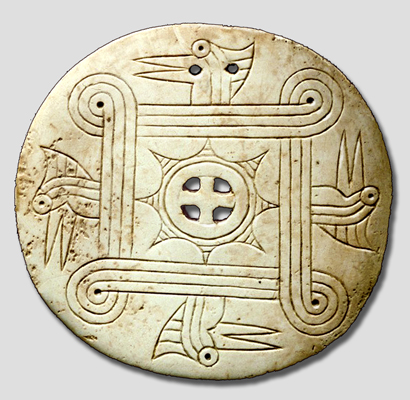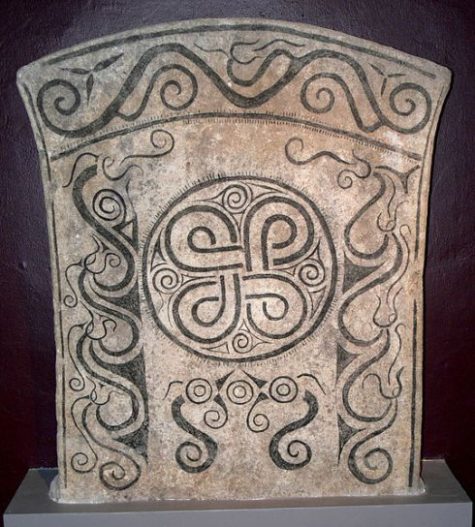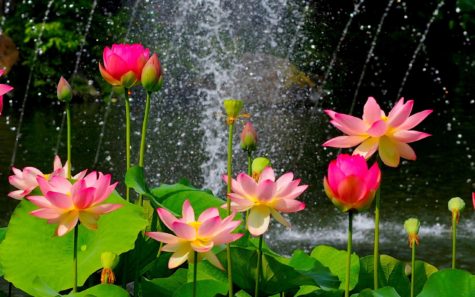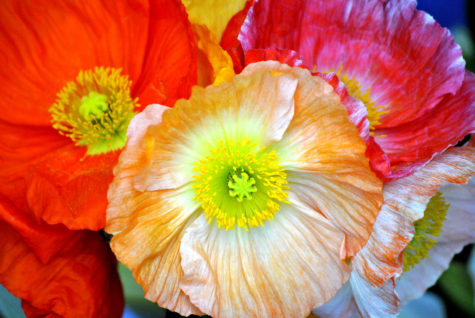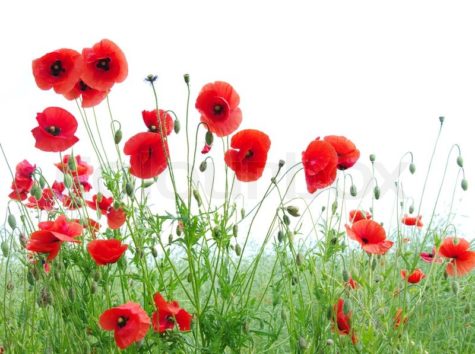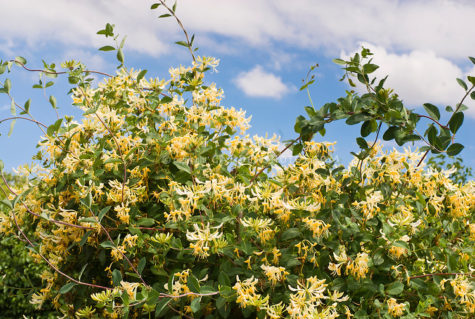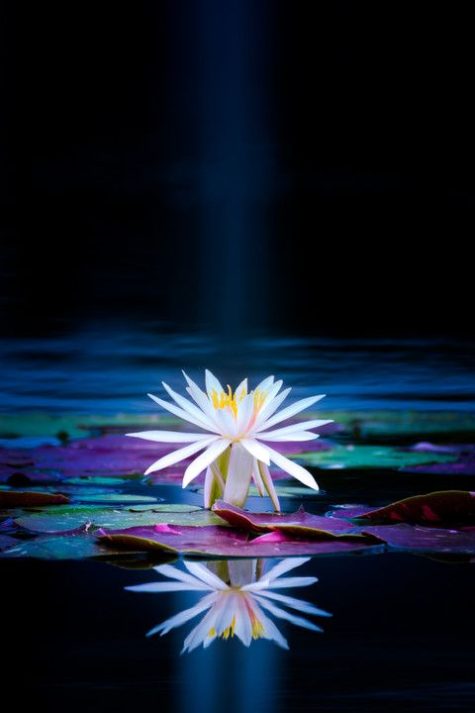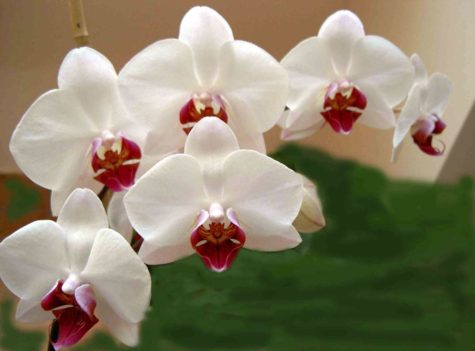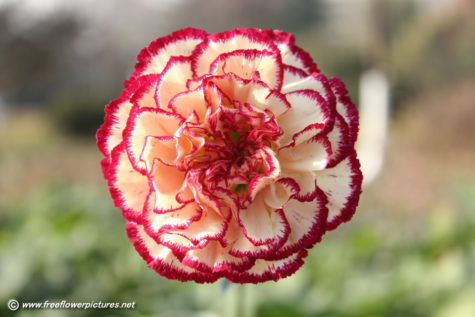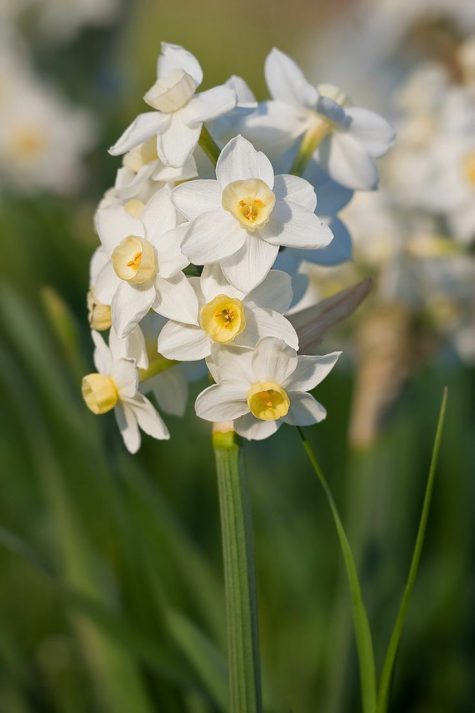Monthly Archives: February 2017
The Cox Mound Gorget
The Cox Mound, or Woodpecker, gorget style is a particularly beautiful and enduring symbol of Tennessee’s prehistoric inhabitants. A gorget was a pendant, or personal adornment, worn around the neck as a badge of rank or insignia of status and was thought to be symbolic of both earthly and supernatural powers. A variety of gorget styles, or designs, are known. As a class of artistic expression, this type of artifact falls within the Southeastern Ceremonial Complex, formerly known as the Southern Cult.
Just over thirty Cox Mound-style gorgets have been found since the late nineteenth century, primarily from prehistoric Mississippian stone box graves and villages along the lower Tennessee, Cumberland, Duck, Harpeth, and Buffalo Rivers of Middle Tennessee, and the middle Tennessee River valley of northern Alabama. As a result of the frequent mortuary association of Cox Mound gorgets with certain pottery types, namely Matthews Incised, as well as other artifacts, it has been postulated that Cox Mound gorgets date to the period A.D. 1250-1450. One rich grave from the famous burial mound at the Castalian Springs site in Sumner County produced two Cox Mound gorgets.
Typically, Cox Mound gorgets were manufactured on exotic marine shell and were white in color. Other materials, such as black slate in Putnam County and human skull fragments in Hardin County, were used rarely. Engraving the intricate design on the hard shell or slate without metal tools took many hours of skilled labor and is thought to have been a winter activity.
A Cox Mound gorget has three important iconographic elements. In the center is a cross inside a rayed circle or sun motif. The cross is symbolic of the sacred, or council, fire. The sun represents the sky deity and/or mythical ancestors. Surrounding the cross and sun is a scroll-like design element known as the looped square. This feature may represent wind, or possibly the litter on which subordinates carried a chief.
Typically the looped square is composed of four lines, but in some cases only three lines are used. Four crested bird heads, which most scholars interpret as woodpeckers, are found on the outer edge. The woodpecker heads always are oriented in a counterclockwise direction, suggestive of the prehistoric Native American swastika.
The woodpecker, like the falcon, was probably a symbol of war to the prehistoric Mississippian Indians. The war symbolism of the bird probably derived from the red head of the bird, which resembled a bloodied scalping victim. The Cherokees associated the red-headed woodpecker with danger and war, and the woodpecker was always invoked for aid by the ball game players. The bird’s pecking is similar to an Indian warrior striking the war post at the Victory dance. For the Cherokees, the color red is associated with male attractiveness and fertility, as well as bravery and war. Groups of woodpeckers are thought to be a sign of war to the Creeks and Seminoles. While war is typically associated with males in Native American society, it is important to note that Cox Mound gorgets have been found in both male and female burials.
Other interpretations include the identification of the four woodpeckers as the four thunders at the world quarters, and a folklorist has speculated recently that the Cox Mound gorget style is a prehistoric expression of the Yuchi myth of the Winds. Cox Mound gorgets are displayed by the Tennessee State Museum and Pinson Mounds State Archaeological Area.
Source: Tennessee Encyclopedia
The Looped Square
 The looped square (⌘) is a symbol consisting of a square with outward pointing loops at its corners. Also called a Shield Knot, it is a universal symbol of protection, seen in all cultures around the world.
The looped square (⌘) is a symbol consisting of a square with outward pointing loops at its corners. Also called a Shield Knot, it is a universal symbol of protection, seen in all cultures around the world.
Although it takes different forms, the distinctive features that make it a powerful protecting charm are the square shape and the interlacing pattern.
One of the earliest known forms is from Mesopotamia and simply consists of a square with a loop at each corner. The same symbol appears in the Kabbalah as the “Shema,” used to invoke the four Archangels
It can also represent:
- Love
- Flow
- Infinity
- Flowing water
This ancient symbol belongs to a class of symbols which are called valknute in Norway. It goes by many names and has many different variations. The looped knot is used by several cultures, and remains in common use today.
In Finland, the symbol was painted or carved on houses and barns, and domestic utensils such as tableware, to protect them and their owners from evil spirits and bad luck. The symbol appears on a number of old objects in Northern Europe. It features prominently on a picture stone from Hablingbo, Gotland, Sweden, that was created between 400 and 600 AD.
In modern times, the symbol is commonly found in Ukraine, Belarus, Denmark, Estonia, Finland, Germany, Iceland, Latvia, Lithuania, Norway, and Sweden as an indicator of locations of cultural interest, beginning in the Scandinavian countries in the late 1960s. It is used as the place of interest marker on information signs and maps, a practice which started in Nordic countries in the late 1960s.
In Sweden, you might call it the sankthanskors symbol. There has been modern speculation that it was chosen for its resemblance to an aerial view of Borgholm Castle; however, the symbol is well-represented in Scandinavian artifacts that predate the current castle by centuries.
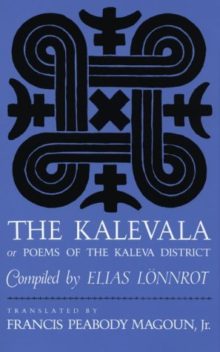 This symbol was also featured on the cover of a printing of The Kalevala, and is sometimes referred to as the Kalevala Symbol. The Kalevala or The Kalewala is a 19th-century work of epic poetry compiled by Elias Lönnrot from Karelian and Finnish oral folklore and mythology.
This symbol was also featured on the cover of a printing of The Kalevala, and is sometimes referred to as the Kalevala Symbol. The Kalevala or The Kalewala is a 19th-century work of epic poetry compiled by Elias Lönnrot from Karelian and Finnish oral folklore and mythology.
It is regarded as the national epic of Karelia and Finland and is one of the most significant works of Finnish literature. The Kalevala played an instrumental role in the development of the Finnish national identity, the intensification of Finland’s language strife and the growing sense of nationality that ultimately led to Finland’s independence from Russia in 1917. Kalevala Day is celebrated in Finland on February 28.
The Cox Mound Gorget, is a similar symbol which played a major role in the lives of Tennessee, Mississippi, and Alabama inhabitants as early as 1250 A.D. It has quite an interesting history, and has it’s own separate page here: The Cox Mound Gorget.
 When the symbol is made with a rope, it is known as a Bowen knot. This is a traditional heraldic emblem also sometimes called a Shield Knot. The Bowen knot is a heraldic knot for the Bowen family crest.
When the symbol is made with a rope, it is known as a Bowen knot. This is a traditional heraldic emblem also sometimes called a Shield Knot. The Bowen knot is a heraldic knot for the Bowen family crest.
Other names for this symbol include:
- Saint John’s Arms
- Saint Hannes Cross
- Sankthanskor
- Hannunvaakuna
- Gorgon Loop
- Johanneskor
Today, you might know it as the “Apple command key” symbol. From its obscure Scandinavian roots, the Saint John’s Arms, or Looped Square vaulted into international fame during the 80s. Originally Apple computer utilized the “open apple” and “closed apple” as its command keys.
In 1984, when the Macintosh personal computer was introduced, Steve Jobs decided that using the apple for shortcut commands was denigrating the brand. According to Apple insider Andy Hertzfeld, when Jobs saw how many apple commands were in an early version of MacDraw he peremptorily told the design team, “There are too many Apples on the screen! It’s ridiculous! We’re taking the Apple logo in vain! We’ve got to stop doing that!”
The bitmap artist, Susan Kare, flipped through her dictionary of international symbols until she found one that easily translated into 16 bit-resolution. It was the looped square symbol—which the symbol dictionary said indicated camping grounds in Sweden.
Collected from various sources.
Lotus
The lotus is arguably one of the most important flower symbols on the planet, along with the lily and the rose. Both the otherworldly appearance of the flower and its growing circumstances make it obvious that the flower is very special. It’s therefore no surprise that the flower is one of the eight auspicious symbols in both Chinese and Tibetan Buddhist iconography.
This sensuous and extraordinary flower, with its perfect petals, rises imperiously from muddy swamps, its head above the dirty water. The symbolism applied by generations of Egyptian, Indian, and Chinese sages is obvious. First, the flower rises in complete perfection from the murky primal waters of creation. Next, the flower comes from the darkness into the light, woken by the Sun. Third, the lotus symbolizes the triumph of spirit over matter and is a metaphor for the journey to enlightenment.
Ancient Egyptians used the plant extensively as a symbol in the paintings and carvings left on the walls of temples and tombs.
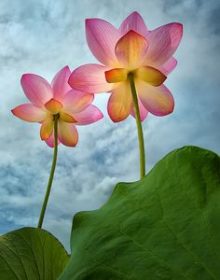 Because the lotus appears to retreat back into the water during the hours of darkness only to rise again above the surface of the water at dawn, the Egyptians saw it as a symbol of death and rebirth. It is now known the plant simply loses old blooms and adds new ones on a daily cycle, but it is still a potent reminder of reincarnation and the mysteries of the afterlife.
Because the lotus appears to retreat back into the water during the hours of darkness only to rise again above the surface of the water at dawn, the Egyptians saw it as a symbol of death and rebirth. It is now known the plant simply loses old blooms and adds new ones on a daily cycle, but it is still a potent reminder of reincarnation and the mysteries of the afterlife.
Priests and other religious leaders also brewed the flowers to make a tea with sedative and mild psychotropic effects, which heightened their sense for ritual work.
The tight bud of the flower is a symbol for the Universe. The flower is also an archetypal symbol for the vulva, and so is associated with the Goddess.
In all cultures the lotus carries within it a reminder of the elements. It has its seed within the earth; it grows in water; the blossom exists in air which also carries its fragrance; and the flower itself is awoken by the Sun, and therefore the element of fire which it also resembles, the curious central circle surrounded by the rays of petals.
In addition, the lotus has eight petals, symbolizing the four cardinal directions and the four intercardinal directions, as well as the rulers of the eight directions of the Universe, or Ashtadikpalas.
Buddhist studies use the lotus flower in guided meditations. The meditation instructs practitioners to imagine themselves as a tiny lotus seed that is deeply buried in the mud. While the mud is dirty and uncomfortable, the seed’s journey is to move calmly through the darkness and into the light. Once the seed completes the journey, it blossoms into the next stage of life. The lotus symbolizes growth and determination.
The Buddhist Lotus represents:
- Patience
- Purity
- Mysticism
- Direct Spiritual Contact
- Emptiness from Desire
- Victory over Attachments
- Enlightenment and the Bodhi State
- Love and Compassion for All Things
- Self-Awareness
- Faithfulness During Spiritual Development
- Rising Out of Suffering
These deep spiritual meanings gave rise to a way of sitting known as the Lotus position. The legs are crossed and tucked in a way that makes the bent knees look like the petals of a lotus. It is an important position in both Buddhist meditation and Hindu yoga practices. The soles of the feet are tucked away, which makes it a respectful position to sit in when visiting a temple where exposing the bottom of your feet is considered rude.
The lotus is also commonly depicted in mandalas, which are spiritual and artistic representations of divine energies and meditation aids in Buddhist traditions. The symbol of the lotus is often partially hidden in the traditional mandala, the petals forming a border that is both symbolic and decorative. The Buddha sits in the center of the eight-petaled lotus, detached from the material world with its cycle of death and rebirth.
In Hindu iconography, the lotus is seen as the base of the earth from which the holy mountains (such as Kailash and Meru) rise. The stalk of the flower is associated with the world axis which rises up through this sacred mountain.
The lotus is used as a symbol for each of the chakras, the number of petals relating to the role and function of each of these energy centers that are situated along the spine and that are said to unfurl like petals with exercise and meditation.
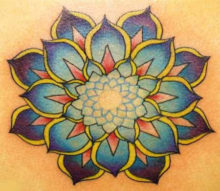 The lotus flower is a popular design for tattoos and art, as it is a daily reminder that perseverance and inner strength results in light and beauty. Getting a Lotus flower tattoo is a beautiful way to show your dedication to a Hindu or Buddhist faith. It is also a reminder to stay humble and focus on developing inner peace.
The lotus flower is a popular design for tattoos and art, as it is a daily reminder that perseverance and inner strength results in light and beauty. Getting a Lotus flower tattoo is a beautiful way to show your dedication to a Hindu or Buddhist faith. It is also a reminder to stay humble and focus on developing inner peace.
You can also develop more balance in your life with a tattoo of this flower because the eight petals represent all eight parts of a spiritual path. A lotus sends a message of gracefulness and love to everyone that sees it.
The colors of the lotus are also significant.
The sacred lotus is pink or white, and is a large flower whose petals can reach up to half a meter in diameter. Also known as the Indian or Oriental Lotus, every part of this plant is edible, and the sugared seeds are a treat during various festivals.
The red lotus is the ultimate symbol of the Sun and is the emblem of India.
The lotus depicted in stylized form in Egyptian friezes is the blue lotus, actually a form of water lily rather than a true lotus. As well as its ethereal color, this lotus contains a psychotropic substance called apomorphine, which no doubt contributes to its status as a sacred flower. The lotus eaters of Greek mythology, immortalized in Tennyson’s poem, “Song of the Lotus Eaters,” lived in a state of hedonistic bliss brought about by eating the seeds of this blue flower.
The white lotus flower and pink lotus flower from the Nelumbo family are seen as meaning purity and devotion. More passionately colored red, purple, and blue Lotus flower blooms can take on a spiritual meaning of ascension, enlightenment, or rebirth. A green Lotus flower is a beautiful gift for anyone trying to improve their life and start good habits.
According to the Language of Flowers, sometimes called florigraphy, a Victorian-era means of communication in which flowers and floral arrangements were used to send coded messages, allowing individuals to express feelings which otherwise could not be spoken, lotus flowers have the following meanings:
- Lotus (General) – Purity, Chastity, Eloquence, Forgetful of the past.
- Lotus (Flower) – Estranged love.
- Lotus (Leaf) – Recantation
Poppy
The symbolism of the Poppy varies greatly from country to country, but most of them share at least one or two common meanings for this particular flower. Here’s a basic list: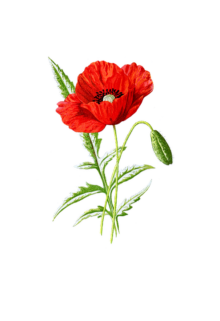
- Restful sleep and recovery
- Consolation for a loss or death in the family
- Remembering the fallen of various wars and armed conflicts
- A lively imagination
- Peace in death
- Messages delivered in dreams
- Resurrection and eternal life
- Beauty and success
- Extravagance and luxury
Poppies have long been used as a symbol of sleep, peace, and death: Sleep because the opium extracted from them is a sedative, and death because of the common blood-red color of the red poppy in particular. In Greek and Roman myths, poppies were used as offerings to the dead. Poppies used as emblems on tombstones symbolize eternal sleep.
This symbolism was evoked in the children’s novel The Wonderful Wizard of Oz, in which a magical poppy field threatened to make the protagonists sleep forever.
The most common opiates – heroin and morphine – come from the opium poppy, Papaver somniferum. Morpheus, the Greek God of sleep, counts these drugs among his attributes, as does Demeter in her guise as Goddess both of the harvest and of death.
The story goes that Somnus, the God of Sleep, made the poppy specifically for Ceres because she could not sleep after she lost her daughter, Persephone. Ceres was so wearied by the search for her lost daughter that she could not get the corn to grow. To save mankind from starvation, Somnus gave her poppies to make her sleep. After she had rested, her strength returned, and the corn grew again. Because of this, in ancient times, it was thought that the presence of poppies in a cornfield was essential to the welfare of the corn. It is still counted as good luck to see poppies in a cornfield.
Because of its reputation as a flower that can either cure or kill, there is an ambiguity about the poppy; some see it as a good influence, and some as evil.
In Oxfordshire, it was said to be unlucky to bring wild poppies into the house and, according to some, it was better not to pick them at all. The ban on their presence indoors does not seem to be a general one, but the flower has an evil reputation in many areas as a cause of minor ills.
In the old days, in England, children would say that if anyone looked into the heart of a poppy, he or she would go blind, temporarily. In Yorkshire, where it was sometimes called Blind Bluff, this was said to be due to the dazzling effect of the intense scarlet color. Another Yorkshire name was Head-waak, because the smell of the flower was supposed to cause headaches. They were also said to produce a violent earache if held against the ear.
Where the poppy head appears in paintings, it often symbolizes fertility. Poppies are associated with fertility because of their many seeds, and the same seeds were used to flavor foods, and given with wine and honey to ancient Greek athletes training for the Olympic Games.
Following the trench warfare which took place in the poppy fields of Flanders during World War I, poppies have become a symbol of remembrance of soldiers who have died during wartime.
This form of commemoration is associated with Remembrance Day, which falls on November 11. In Canada, Australia and the UK, poppies are often worn from the beginning of November through to the 11th, or Remembrance Sunday if that falls on a later date. In New Zealand and Australia, soldiers are commemorated on ANZAC day (April 25), although the poppy is still commonly worn around Remembrance Day. In November, around the time of Remembrance Day, paper poppies are often sold to raise funds for bereaved families.
The poppy as a symbol of grief for lost warriors is not new; in the Iliad, written in the eighth century BC, a description of a dying warrior compares him to a poppy.
A second interpretation of poppies in Classical mythology is that the bright scarlet color signifies a promise of resurrection after death.
The leaves of the poppy are a divinatory tool; when placed beneath the pillow they are said to give the sleeper dreams of the future.
According to the Language of Flowers, sometimes called florigraphy, a Victorian-era means of communication in which flowers and floral arrangements were used to send coded messages, allowing individuals to express feelings which otherwise could not be spoken, poppies have the following meanings:
- Poppy (general) – Eternal sleep, oblivion, imagination
- Poppy (red) – Pleasure
- Poppy (white) – Consolation, Dreams, Peace, Sleep of the heart. Oblivion. My bane. My antidote.
- Poppy (yellow) – Wealth, success
Information collected from various sources.
Sign of the Poppy
“I provide beauty to your senses.”
If you were born between April 20 and May 19, you are a poppy among the zodiac flower signs. You love the finer things in life, and you love to share them with other people. You have a flare for design, a good eye for detail, and a knack for putting things together with style. Refinery comes natural to you, and you have a classy way about you that others find alluring. Poppy people are about pleasure: giving and receiving it. You enjoy security and comfort. Those with the flower sign of the poppy are very resilient too, and can weather any storm because of their patience and headstrong nature.
Source: What’s Your Sign
Sign of the Honeysuckle
“My vines climb to great heights.”
If you are born between March 21 and April 19, you were born under the sign of the honeysuckle you are sweet to the senses of others. Meaning, you naturally entice others with your charm and grace. You have a smooth confidence that attracts a wide variety of friends and business partners. Just as bees can’t resist the lure of the honeysuckle – people can’t resist your energy. You are the first of the flower signs and so you are assertive and a natural leader of the vine. Honeysuckle people are strong and determined, weaving their way through any challenge, and are quite deft at finding innovative solutions.
Source: What’s Your Sign
Sign of the Water Lily
“My roots touch unseen knowledge.”
If you were born between February 20 and March 20, you were born under the sign of the Water Lily. Water lily flower signs are perceptive and deeply psychic. Water runs through all the flower signs but especially through yours and this accentuates your intuitive abilities. You are sometimes able to absorb ideas and thoughts of those around you. You can be emotionally swayed by other people’s feelings too. Sometimes your emotions can run out of control, but you can turn to your natural creative abilities to help you get grounded. You are a natural artist, dancer, and musician. You are also an excellent communicator, and may be drawn to other languages too.
Source: What’s Your Sign
Sign of the Orchid
“My uniqueness is my effectiveness.”
If you were born between January 21 and February 19, you were born under the sign of the orchid. Those with the zodiac flower sign of the orchid are curious and inventive. You can be contradictory but you know exactly where you are coming from. You have a dreamy persona and people are attracted to your unique, sometimes eccentric ways. You have a different way of looking at the world. You are a natural humanitarian, and love to unravel mysteries. You are also very good at organizing or completing tasks that allow you to establish order.
Source: What’s Your Sign
Sign of the Carnation
“Simplicity is its own reward.”
If you were born between December 22 and January 21, you were born under the sign of the Carnation. Those with the carnation flower sign are beautifully adept at putting things in order, and organizing. You are strong willed and determined for others to see your point of view. You are a natural leader, and others look to you to lean on. You can be driven and determined and this makes you a strong personality. You are no stranger to hard work, and you like to get things done your way. You like security, particularly if you are building a comfort zone with your own two hands.
Source: What’s Your Sign
Sign of the Narcissus Flower
“Escape into my dreamy depth.”
If you were born between November 22 and December 21, you were born under the sign of the Narcissus. Narcissus zodiac flower signs can be very influential and enjoy sharing their philosophical ideas with others. You are direct, to the point, trustworthy and honest. You are naturally wise, and you also are gifted with good luck. You come on strong, but have a sensitive side you don’t share with too many people. You have an active imagination and love to dream the days away.
Source: What’s Your Sign
